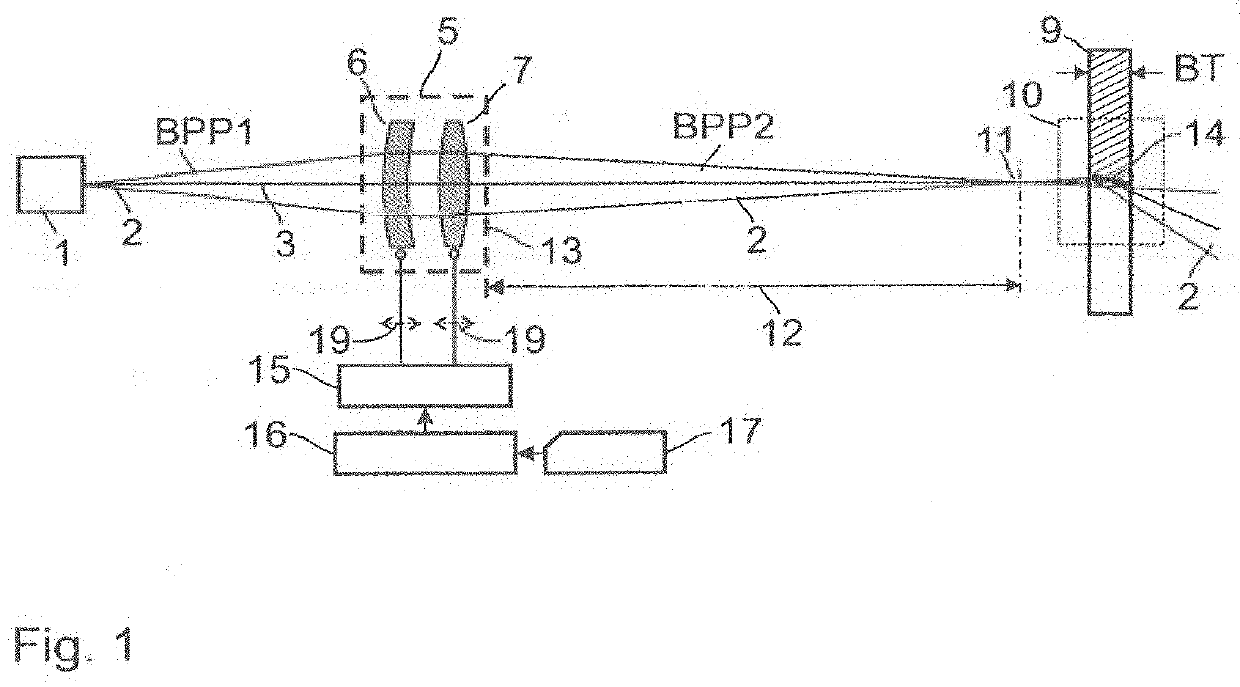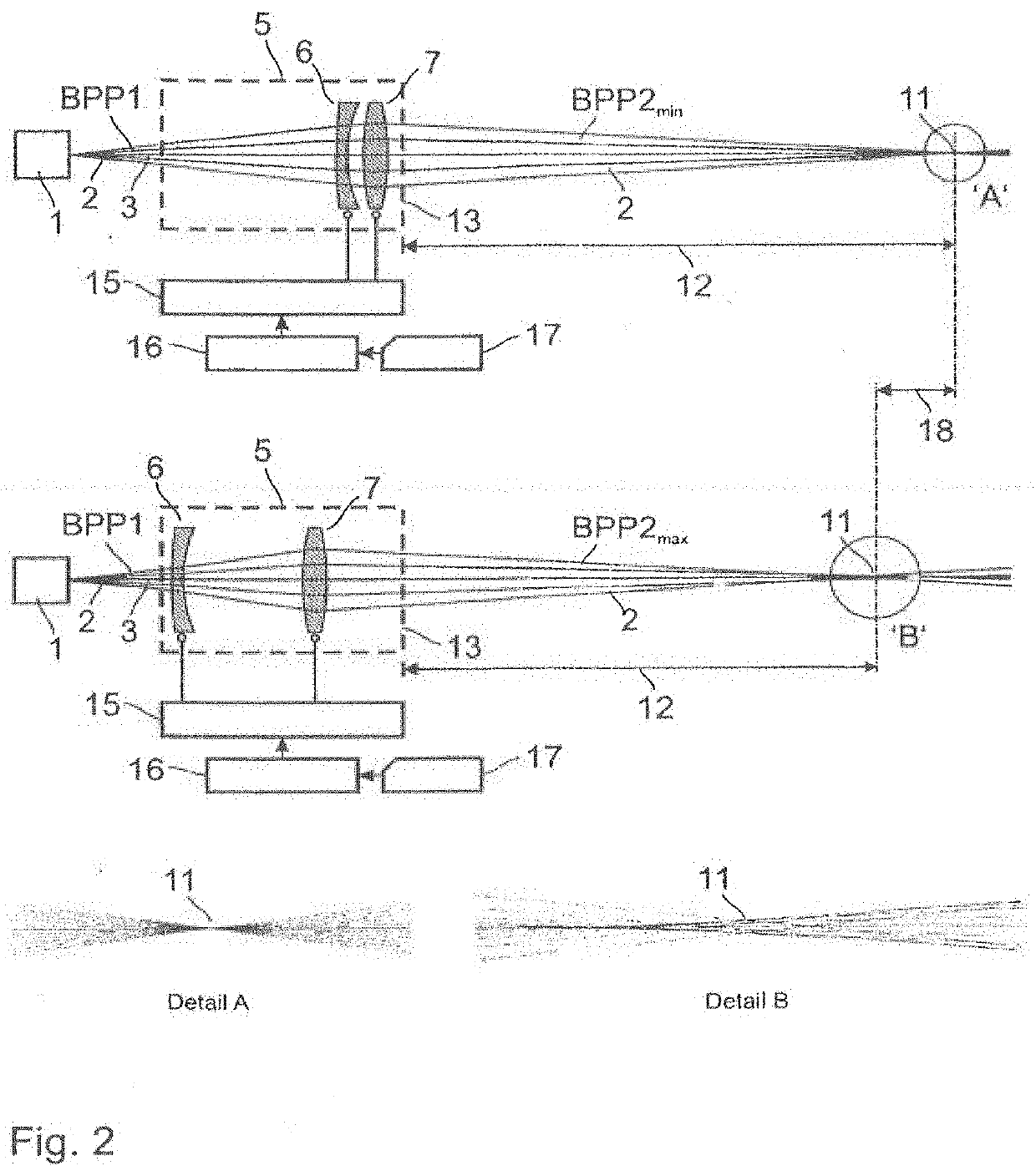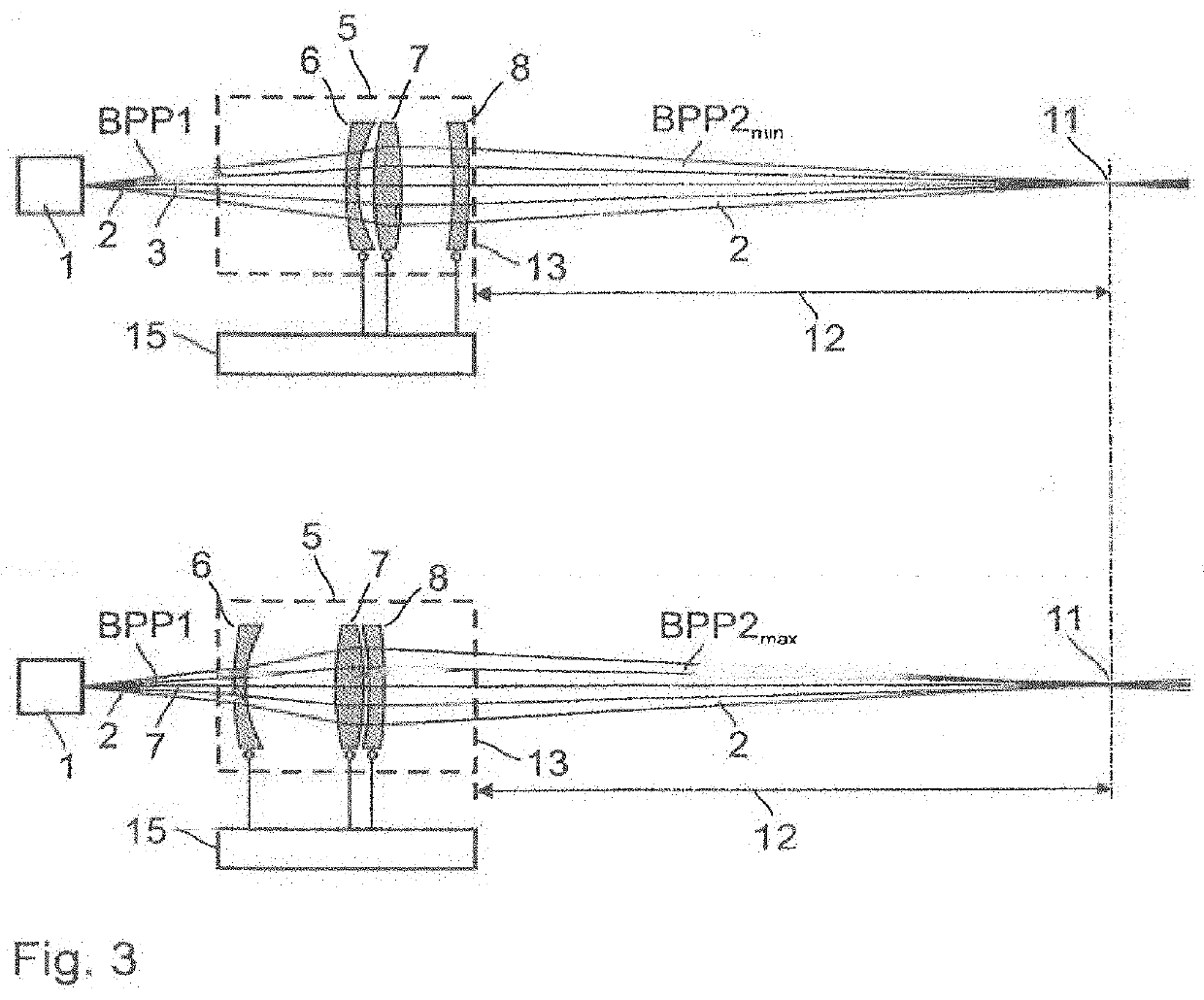Apparatus and method for material processing
a material processing and apparatus technology, applied in the field of apparatus and method for material processing, can solve the problems of discrepancy, variability, annular redistribution of radiation, complex manufacturing process, etc., and achieve the effect of cost-effectiveness, generating aberrations and changing more efficiently
- Summary
- Abstract
- Description
- Claims
- Application Information
AI Technical Summary
Benefits of technology
Problems solved by technology
Method used
Image
Examples
first embodiment
[0067]The apparatus according to the invention, as illustrated in FIG. 1 comprises a beam source 1 emitting electromagnetic radiation 2, the beam axis of which is designated by the reference mark 3. Radiation 2 has a defined power density distribution with a first beam parameter product BPP1. The divergent radiation 2 from beam source 1 enters beam-shaping optics 5 as non-collimated radiation.
[0068]The beam-shaping optics 5 serves to variably shape and focus the radiation 2 and has at least one first optical element 6 and at least one second optical element 7. In the example shown, the first optical element 6 of this beam-shaping optics 5 is a meniscus lens, while the second optical element 7 of the beam-shaping optics 5, which is positioned behind the first optical element 6 when viewed in the direction of radiation 2, is a biconvex converging lens.
[0069]Thus in the first embodiment of FIG. 1, the first optical element 6 and the second optical element 7 of the beam-shaping optics ...
second embodiment
[0083]FIG. 2 shows a device according to the invention. On the basis of FIG. 2, the characteristics and features of the invention regarding the change of the second beam parameter product BPP2 and the waist distance 12 are explained in more detail.
[0084]Also in the embodiment of FIG. 2, the beam-shaping optics 5 is composed of a first optical element 6 in the form of a meniscus lens and a second optical element 7 in the form of a biconvex lens. The small distance between the two optical elements 6 and 7 results in low aberration focusing of the emitted radiation 2, so that a beam waist 11 of the focused radiation at a waist distance 12 results, which has a small expansion, as shown in detail A. In this case, a minimum second beam parameter product BPP2min is associated with radiation 2 on the output side of beam-shaping optics 5; this is defined as the second beam parameter product BPP2 in which the product of beam waist radius (rF) and beam divergence assumes a minimum value, so th...
third embodiment
[0095]In FIG. 3, which shows the apparatus according to the invention, the beam-shaping optics 5 has, in addition to the first optical element 6 and the second optical element 7, a third optical element 8 on the output side of the second optical element 7, the position of which can be changed by means of the adjusting device 15. In FIG. 3, the third optical element 8 is a convex-concave lens and is located, for example, close to reference plane 13, while the first and second optical elements 6, 7 are at a small distance from each other, as shown in the upper illustration in FIG. 3. The third optical element 8 of the beam-shaping optics 5 serves to compensate for the change in waist distance 12, which occurs during variation of the beam parameter product BPP2 by shifting the first and second optical elements 6 and 7, and ideally to keep it constant. By arranging the optical elements 6, 7 and 8 within the beam-shaping optics 5, a minimum value of the beam parameter product BPP2 is set...
PUM
| Property | Measurement | Unit |
|---|---|---|
| power density distribution | aaaaa | aaaaa |
| optical property | aaaaa | aaaaa |
| optical properties | aaaaa | aaaaa |
Abstract
Description
Claims
Application Information
 Login to View More
Login to View More - R&D
- Intellectual Property
- Life Sciences
- Materials
- Tech Scout
- Unparalleled Data Quality
- Higher Quality Content
- 60% Fewer Hallucinations
Browse by: Latest US Patents, China's latest patents, Technical Efficacy Thesaurus, Application Domain, Technology Topic, Popular Technical Reports.
© 2025 PatSnap. All rights reserved.Legal|Privacy policy|Modern Slavery Act Transparency Statement|Sitemap|About US| Contact US: help@patsnap.com



